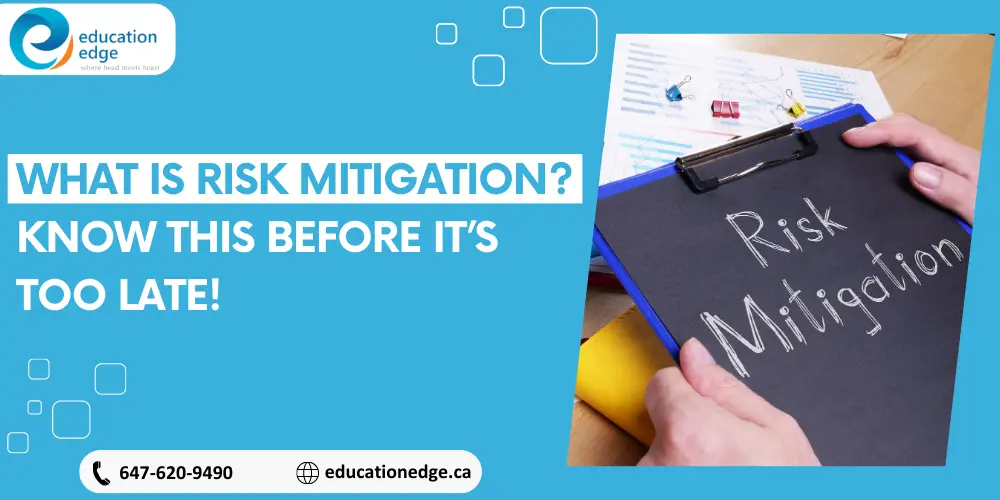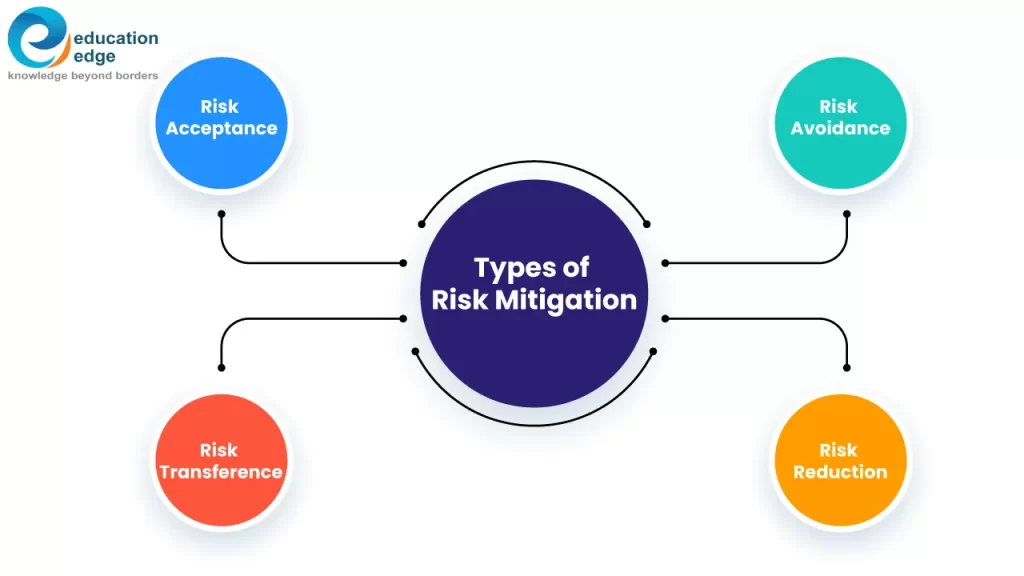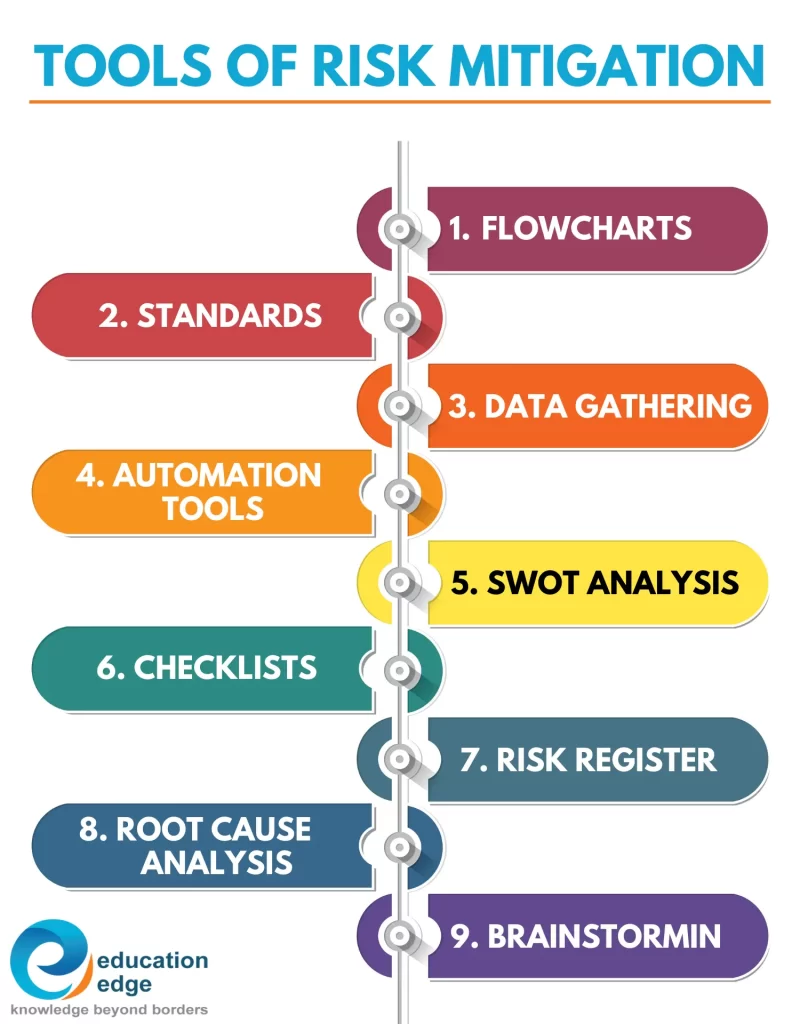Hey! Wanna Know what is risk mitigation? So, make sure to read this blog to know all the information about that…Happy Reading!

Every project involves some risk that causes significant disturbance and financial loss. Risk Mitigation is a strategy for minimizing project risk that helps to mitigate risks that are involved in a project.
Therefore, an organization needs to know what is risk mitigation to prevent the project from these risks. Here we will provide you with all the essential information that you need to know.
What is Risk Mitigation?
Risk mitigation is the strategy through which a company reduces its impact on various projects by risk identification and analysis. An Organization faces several risks, some of which can cause significant disruption or financial loss.
Therefore, mitigating these risks is a smart move that every organization should take to avoid such unexpected situations.
Types of Risk Mitigation
There are 4 different types of risk mitigation strategies such as acceptance, avoidance, transference, and reduction each of which involves a separate function for an organization.

1. Risk Acceptance:
Risk Acceptance does not mitigate risk. This strategy will be used when there is a minimum probability of these risks and an organization does not spend a large sum of money.
Risk acceptance is a reasonable alternative for minor risks where the cost of protecting against the risk would exceed the potential damages.
2. Risk Avoidance:
A risk avoidance strategy involves taking steps to prevent the danger from occurring. This may necessitate sacrificing other resources or techniques to ensure you are doing everything possible to prevent the risk.
If you bear the risk of not being able to carry out a task for a specific project owing to a lack of expertise. To prevent this risk, you could hire many specialists in case one becomes ill or is unavailable.
3. Risk Transference:
Risk transfer means shifting the risk to a separate third party or entity. In this strategy, risky activities can be allocated to a third party or an insurance policy to cover the expenses of probable disruption.
4. Risk Reduction:
This is one of the most common strategies used by an organization. In this potential risks are reduced after analyzing it and taking some essential measures.
This is what happens when you handle the risk’s cause or consequence. It can be controlled by Implementing data-gathering or early warning systems that help to better anticipate the impact, chances, or timing of risk.
Steps to Successful Risk Mitigation Strategies
Each risk is different depending on the business objectives. However, to handle these risks effectively you should consider the following steps.
1. Identify the risk:
The initial step of risk mitigation is to identify the potential risk as per the need of the user.
When you can identify, define, and address risk, you can better prepare your team and management to prevent various types of risk.
2. Execute a Risk Assessment:
After identifying the potential risk the next step is risk assessment. Assessing risk is essential to understand its impact on the organization.
With the help of this risk assessment, you can also find out the level of risk the organization is going to face.
3. Prioritize the Risk:
The potential risk is identified and analyzed now it’s turn to prioritize the risks as per their intensity.
This prioritization is essential for effectively allocating resources and it ensures that high-intensity risks are handled with appropriate project management resources.
4. Monitor the Risk and Update:
Monitoring the risk is a crucial step in risk mitigation strategy. The ever-changing needs of an organization need to be monitored from time to time.
This also includes tracking how risks evolve and the effectiveness of mitigation strategies implemented. After the monitoring, you will be able to prepare the plan as needed.
Tools of Risk Mitigation
Risk Management is also essential to understand the risk mitigation tools that assist in detecting and assessing risk.
Here are some examples of risk mitigation tools:

The Benefits of Risk Mitigation
There are a lot of benefits of that in your project. The following are nine benefits that your firm can obtain when using Risk Mitigation strategies:
- Enables you to prevent losses: By preparing for risks, you can avoid or limit losses if something goes wrong.
- Protect your reputation: Successful risk mitigation can help to defend your company’s reputation. This is especially vital while working on a high-profile project.
- Facilitates decision-making: Risk management can assist you in making better project decisions. This is because it forces you to consider potential risks and how they may affect your project.
- Reduces non-conformance: Risk management can help you lower the likelihood of non-conformance with requirements. This is critical for any project that must comply with regulations.
- Increases efficiency: You can increase the efficiency of your project by lowering the likelihood of things going wrong.
- Reduces stress: Having a risk management plan in place helps minimize stress for everyone involved in the project.
- Builds trust: Successful risk management can lead to increased trust between you and your team members. It can also foster trust among other parties.
- Increases the probability of success: Through limiting risk, you can increase the likelihood of your project’s success.
- Enhance communication: Effective risk management necessitates clear and effective communication. This can boost communication inside your team as well as with other stakeholders.
However, mastering the art of risk mitigation requires a deeper understanding of risk management principles and practices. One of the best ways to develop this expertise is by obtaining a PMI Risk Management Professional (PMI-RMP®) Certification. This globally recognized certification provides professionals with the tools and techniques needed to assess and manage risks effectively, ensuring that they can navigate uncertainty and keep their projects on track.
Frequently Asked Questions
1. What are the four main risk-mitigation strategies?
ANS: The four main risk mitigation strategies are.
1. Risk avoidance
2. Risk acceptance
3. Risk transference
4. Risk limitations
2. What exactly is risk mitigation?
ANS: It is the strategy through which a company reduces its impact on various projects by risk identification and analysis.
3. What is the difference between risk mitigation and risk management?
ANS: Risk Mitigation is a process of risk management. Risk management is the process of evaluating, identifying, and addressing risks, while risk mitigation focuses on taking essential measures to reduce the chances of potential risks.







